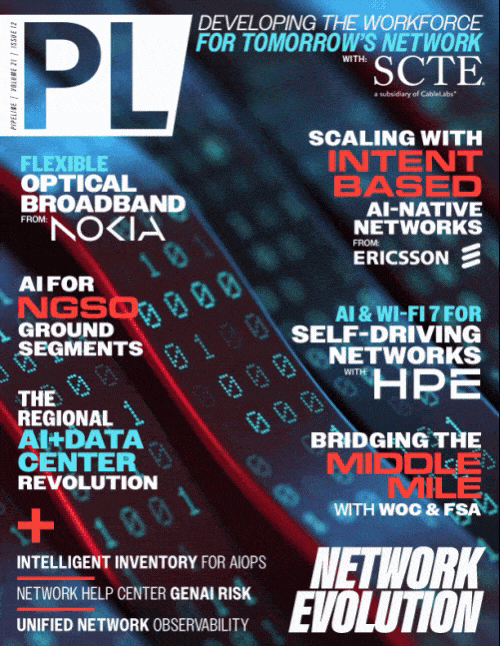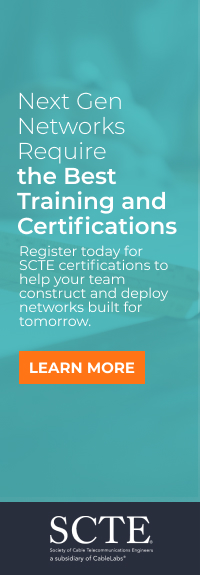Rethinking Workforce Development
for Tomorrow's Workforce
By: Cory Pavicich

The broadband industry is entering a historic era of accelerated growth. Propelled by unprecedented public and private investment and surging consumer demand for ubiquitous, high-speed connectivity, we have embarked on a nationwide mission to build the infrastructure of tomorrow. This monumental effort promises to close the digital divide, power next-generation technologies, and fuel economic growth for decades to come. Yet, this vision is not guaranteed. Its success hinges not merely on the deployment of fiber and advanced hardware, but on the cultivation of our most critical asset: a skilled, adaptable, and forward-thinking workforce. The chasm between the talent we have and the talent we will need represents one of the largest challenges to realizing our fully connected future.
The Evolving Profile of the Broadband Professional
The nature of network technology and the role of those who manage it have undergone a radical transformation. Yesterday’s technician was primarily a reactive problem-solver, dispatched to address service interruptions after they occurred. Today’s professionals are proactive stewards of networks that are orders of magnitude more complex, shaped by the push toward Hybrid Fiber-Coax (HFC), fiber and multi-gig connectivity, and the explosion of the Internet of Things (IoT), edge computing, and low-latency applications. With automation now handling routine diagnostics and standard trouble calls, field professionals are freed to focus on the challenges that demand higher-order skills, resilience planning, and critical thinking.
This evolution demands a corresponding shift in our training philosophy, moving from a “break-fix” mentality to one of proactive stewardship. By 2029, predictive network maintenance is expected to be a $48B market—growing more than 400%. This surge underscores how essential disciplines like Proactive Network Maintenance (PNM) have become. Instead of waiting for impairments to disrupt service, today’s technicians must be fluent in using advanced tools and data analytics to identify, diagnose, and resolve potential issues before they ever impact the customer. This preventative approach is vital for maintaining the robust, always-on networks that society now depends on. Effectively, we are asking our workforce to become network guardians, equipped not just with technical know-how but with the analytical foresight to prevent problems from ever arising.
Architecting a Modern Learning Ecosystem
This growing urgency is spelled out in numbers. According to a 2024 report by the Fiber Broadband Association and Continuum Capital, network expansion, particularly through BEAD, is expected to require approximately 60,000 new hires, including 28,000 construction workers and 30,000 fiber and broadband technicians in the near future. At the same time, the U.S. Bureau of Labor Statistics projects a need for nearly 25,000 new telecommunications technicians annually to replace those retiring or leaving the workforce.
To address this workforce shortage and cultivate the necessary advanced capabilities, the industry must move beyond traditional, static training paradigms. The old model of episodic, one-size-fits-all courses is no longer sufficient. What is required is a dynamic and responsive learning ecosystem—one that is personalized, continuous, and directly aligned with the real-world competencies required for success.
The foundation of this ecosystem must be built on vendor-neutral, industry-ratified standards. When training is anchored to a common set of best practices and a shared technical language, skills become portable, quality becomes consistent, and collaboration across the industry is strengthened. Upon this foundation, we can construct role-based learning pathways that guide individuals from novice to expert. These pathways should be modular, allowing professionals to acquire skills in manageable, targeted increments that fit within demanding work schedules.
This model also embraces the concept of stackable credentials, where each completed course or certification builds upon the last, creating a clear and motivating trajectory for career advancement. This approach not only validates an individual’s growing expertise but also provides employers with a reliable benchmark of their capabilities.
Bridging the Talent Gap Through Strategic Alliances
The scale of our workforce challenge is too vast for any single company or organization to address alone. Meaningful progress requires a concerted, collaborative effort between network operators, industry associations, and academic institutions. These strategic alliances are essential for building a sustainable talent pipeline that can meet the industry’s long-term needs. Technical standards and training organizations must continue evolving and take an active role in preparing the next


















